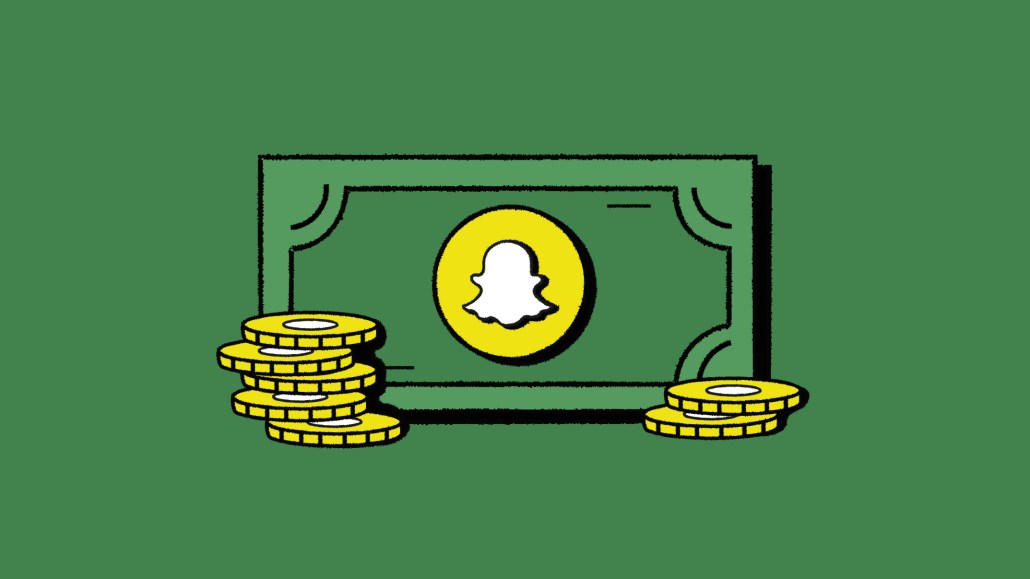Snapchat’s limitations are finally catching up — and marketers are noticing

Snapchat has a lot of work to do if it wants to win back advertisers.
Its top ad sales execs have left at a time when media dollars are leaking from the platform. The direction of its ad sales team is at crossroads in the wake of a company-wide restructure. TikTok continues to not only eat into its audience, but also its ad dollars. And this is all to say nothing of the fact that advertising on the platform isn’t always as effective as it once was, thanks to Apple throttling the data that made those investments seem worthwhile. Throw in the threat of a recession in some of Snapchat’s key markets, and it’s clear the one-time darling of the ad industry is in uncharted territory.
So, what’s next?
Early signs suggest that Snap’s CEO Evan Spiegel will try and ride out the storm and double down on its augmented reality capability as a differentiator.
“It is the unsung hero of innovation, especially through AR,” said Christina Miller, head of social at digital agency VMLYR. “Most other platforms win by copying what’s doing better elsewhere, onto their own platforms. But Snapchat has paved its own course in terms of products.”
Snap’s management team acknowledged that AR will be a focus area going forward in its Q2 2022 Investor Letter, as the company wrote it sees “a massive opportunity for AR-driven product innovation in e-commerce.”
“Logic says that in a year or two, Snapchat will have a stickier platform, a broader demographic, and it will be larger so it’ll be very well positioned,” said Nat Poulter, co-CEO of social publisher Jungle Creations. “E-commerce is the biggest market, and I think Snap is having conversions with advertisers around that. Its vision is very much to continue to focus on AR. If the platform can start to take a share of the wallet from that, that’s exciting.”
Exciting as that may be for improving Snap’s prospects, it won’t have a material impact on them. Neither AR nor e-commerce address the endemic issues with the app’s ads business: Snapchat is more mobile messaging app than a short-form content one. As a result, it’s always operated at the smaller end of ad budgets compared to some of its contemporaries. “It’s more campaign-based than other platforms so it’s the first one to be cut,” Poulter explained.
For that to change, Snapchat needs to finally show that it can reach a broader audience. Until the platform fixes that part of the pitch, it’s always going to be seen as an add-on or used to reach a niche, usually young audience.
TikTok’s rise in the eyes of advertisers is a testament to that. Sure, it’s still predominantly viewed as a place to reach younger audiences, but that fact hasn’t been allowed to overshadow the narrative that TikTok also drives culture. In fact, TikTok is one of the most popular apps in the world, pulling in over one billion active users a month, according to the business. Snapchat, on the other hand, pulls in over half a billion monthly users.
With that said, Spiegel is already on the case, having addressed the need to broaden Snapchat’s reach by targeting millennials in a leaked internal memo sent to employees on Sept. 6, according to The Verge. Time will tell whether it’s too late to change things.
“[Snapchat is] often the last platform we would advertise on, solely because it’s got a super young audience, especially in the U.S., and teens don’t have a ton of disposable income,” said Miller. “It’s always struggled to convert its popularity into profit.”
Snapchat’s lack of capabilities and functionalities compared to its competitors certainly hasn’t helped its case. But Erika Williams, paid social account director at media agency the7stars, said the rise of TikTok in particular has dramatically changed the industry’s paid social media landscape. “Snapchat is competing with TikTok because it offers a similar style of targeting to those audiences, but TikTok has more offerings and capabilities available than Snapchat currently has,” Williams said.
Those differences have been discussed at length, but really they come down to this: Snapchat is a more mature ads business, so it is really aimed at those advertisers with ample funds to go after its audiences, whereas TikTok is more for those marketers who have the patience to experiment more.
“For our full funnel clients, Snapchat needs to be upfront that they can offer a great alternative to e-commerce,” Williams added. “They have to push that to ensure the platform continues to compete with TikTok and Meta.”
If Snapchat really wants to finally secure its grip on ad dollars, it faces an increasingly uphill battle to get its ads business back on track. It’s too big to be a niche play for advertisers, and too small to give the broad reach they crave. But then again, that’s always been Snapchat’s problem.
More in Marketing

Agencies create specialist units to help marketers’ solve for AI search gatekeepers
Wpromote, Kepler and Jellyfish practices aim to illuminate impact of black box LLMs’ understanding of brands search and social efforts.

What AI startup Cluely gets — and ad tech forgets — about attention
Cluely launched a narrative before it launched a tool. And somehow, it’s working.

Ad Tech Briefing: Start-ups are now table stakes for the future of ad tech
Scaled ad tech companies need to maintain relationships with startups, when the sector is experiencing ongoing disruption due to AI.







